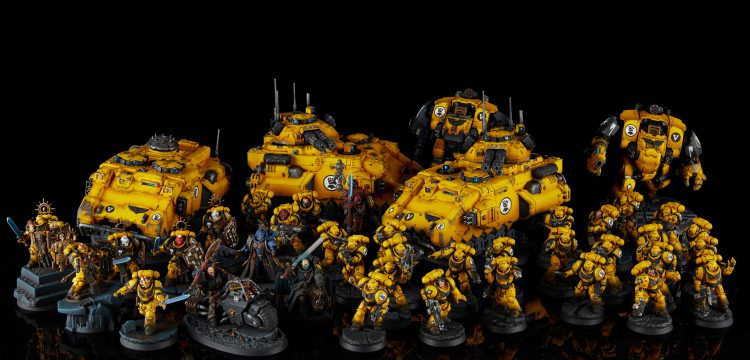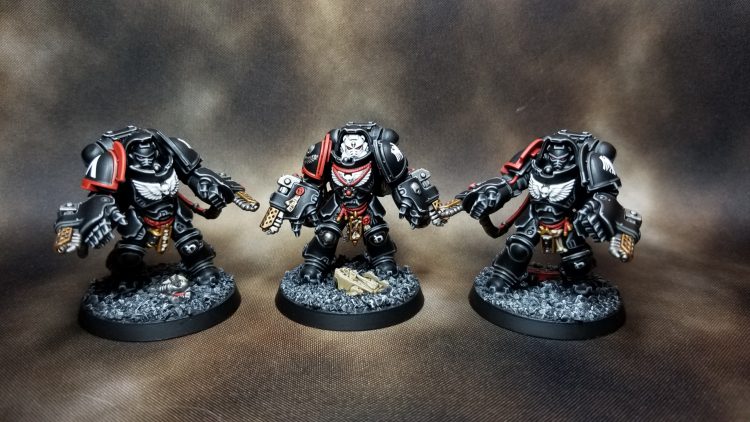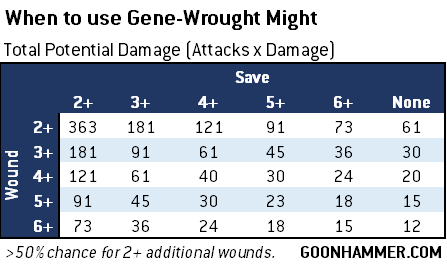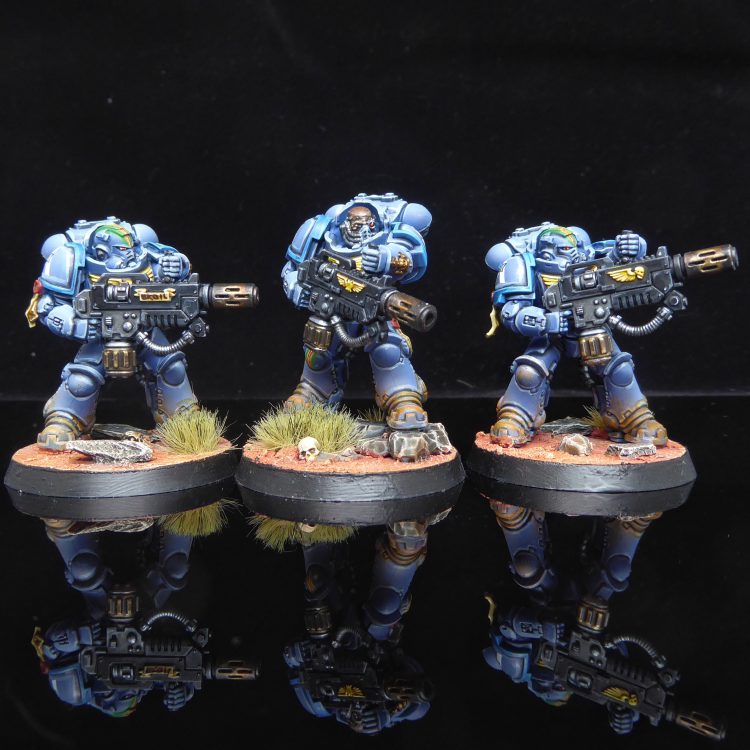This week’s Hammer of Math takes a deep dive into the optimal strategy for applying Transhuman Physiology and Gene-Wrought Might courtesy of a reader question. If you would like a question answered in this series, please use this form to submit it.

Reader Alcyon provided a fantastic question which should be a lot of fun to answer.
I would love to know the approximate value of some stratagems across a range of different unit types. For example, how much should you expect Gene-Wrought Might to improve the damage done by a unit, and are there better uses for it in some squads than others? I can’t help but feel that there must be “optimal” uses for some stratagems and that some are strictly better than others in terms of return for your CP.
Another example might be a way of determining whether Transhuman Physiology is “worth it” when you are merely reducing a weapon wounding on 3s to 4s or whether it’s usually only worth the CP if you are going from 2+ to 4+. Obviously this is tough because of the wide variety of variables but I think Transhuman is such a good rate that it actually doesn’t matter that much, and other stratagems that cost similar amounts aren’t as valuable. But it’s hard to compare them without a number of comparable scenarios (maybe Gravis v. T4 against some stock weapons, I dunno.)
It would be really handy to have a shorthand for how many wounds you can expect Transhuman to save you on average, and how many extra wounds you can expect Gene-Wrought Might to garner you, so you can punch in your situation and figure out the value on the fly.
Thanks for reading, love the column, so proud to be a patron! Long live Hammer of Math!
One of the biggest challenges is establishing the ‘value’ of something as subjective as a Stratagem. This is particularly true when it comes to Stratagems that depend on external factors such as the number of attacks being dealt to a particular unit, or the quality of the attacks being made. The easiest point of reference are attacks that deal mortal wounds on a single model like Hellfire Shells, Clavis, or Diseased Effluents; in general the ratio is around 1d3 mortal wounds per command point. The value of a CP changes dramatically based on the circumstances, but as a starting point using a threshold of 1 command point per 2 wounds dealt or saved seems viable.

Transhuman Physiology
The Astartes Stratagem Transhuman Physiology costs 1/2 CP (depending on if the target PRIMARIS unit has more than five models) to allow the unit to ignore wound rolls of less than 4 for the duration of the phase. Since rolls of 1 already always fail this effectively cancels out all wound rolls of 2 or 3, meaning the Stratagem is only useful against attacks which have a 3+ to wound or better. To determine when we might want to use the Stratagem we can calculate the amount of incoming damage that the unit would have to face in order to result in at least two more wounds being saved. This is the method that I came up with:
- Determine the difference in probability of wounding from a given attack (hit, wound, and save) when Transhuman Physiology is applied. This gives me P, the probability that the Stratagem actually mattered.
- Calculate inverse binomial distribution using P to determine the probability that the 2nd wound was saved on a particular attack.
- Sum up the resulting distribution until I have a cumulative probability that’s greater than 50%, meaning that by attack N there’s an above average chance that the Stratagem saved two wounds.
The inverse binomial distribution is a powerful tool for this calculation. It tells you the probability that, after a given number of trials of independent events of a particular probability (P), the desired number of successes (r) will occur on a particular attempt (X). For example let’s say that we’re hoping to flip a coin (P = 0.5) and see heads twice (r = 2). The probability that the first two coin flips will turn up heads (X = 2) is 0.25, which is also curiously the probability that the third coin flip (X = 3) will produce the second result of heads. The probability that the fourth coin flip (X = 4) will produce the second result of heads is 0.19. Summing up these values we get that the probability that heads will appear at least twice within the first four coin flips is a nicely rounded 0.69, meaning it will occur the majority of the time. To apply this to Warhammer 40k, we start with the probability that a given attack will actually do damage. For example an attack with a 2+ to hit, 2+ to wound, and no save has a probability to wound of 0.69. Change the 2+ to wound to a 4+ and the probability is now 0.42, leaving us with a difference of 0.27. In other words for this particular set of parameters Transhuman Physiology would affect roughly 27% of the attacks. Apply that to the entire spectrum of hit and save values and you get the two charts below.
To use these charts, start off with the expected wound value (2+ or 3+). Next, multiply the expected number of attacks by the amount of damage dealt. It’s important to disregard excess damage that will be ignored if it kills a model; if an attack has a Damage characteristic of 4 but the target is a 2 wound Primaris Intercessor then you only multiply the incoming attacks by 2. When dealing with an odd number (for example 2 damage attacks against 3 wound models) then divide the Wound characteristic of the target by the number of attacks required to kill it (3/2 or 1.5 damage per attack). Once you’ve established the damage dealt, look up the chart to determine if the incoming damage is greater than the value listed. If the incoming damage is greater than what’s on the chart then Transhuman Physiology should save enough wounds to be worth the CP.

For example, we have a unit of 10 Intercessors being attacked by six Inceptors armed with plasma executioners. As they do, each Inceptor is overcharging their attack and so is hitting on a 3+, wounding on a 2+ and dealing 2 points of damage. There’s a total of 36 attacks (plasma incinerators have Blast and each Inceptor fires two of them) so the total incoming damage is 72. We’ll say the attacking unit is not in the Tactical doctrine so the AP is only -3, meaning our Intercessors get a save of 6+. We find the chart for the 2+ to wound against 5+ models, look up 3+ to hit and 6+ save, and see that the expected incoming attack of 72 points of damage is well beyond the 20 damage threshold needed to justify the use of the Stratagem.
Incidentally even at a 4+ to wound 36 plasma incinerator attacks averages 10 dead Primaris so it’s probably not worth it on the other side, but at least the chart works.

Gene-Wrought Might
The offensive counterpart to Transhuman Physiology, Gene-Wrought Might is a 1CP Stratagem that allows a PRIMARIS unit to automatically wound on any attack that has an unmodified hit roll of 6 in the Fight phase. To figure out the minimum amount of damage needed to be applied to justify the Stratagem we can apply a variation of what we did in the previous section.
- Determine the difference in probability of wounding the target before and after Gene-Wrought Might is applied to get P.
- Apply the inverse binomial distribution via P to figure out how likely it is that the Stratagem will be responsible for an extra two wounds over a given number of attacks.
- Sum the probability together until we have a cumulative probability that’s greater than 0.50 to determine N, the minimum amount of damage required.
Now here’s where things get interesting; the Weapon Skill of the attack is irrelevant. The reason for this is because the effects of Gene-Wrought Might are wholly independent of the probability of hitting. On average one in six attacks will result in an unmodified hit roll of six, and since those rolls were going to result in a hit anyway the target number doesn’t matter. What does matter is the save and wound rolls; as expected the Stratagem is most effective when the probability of wounding is low. To use the chart below, multiply the Damage characteristic of the weapon by the number of attacks. As with the previous chart take care to consider the potential for lost wounds; a thunder hammer hitting an Ork will only inflict a single point of damage.


Wrapping Up
Thanks to Alcyon for providing such an awesome question! Hopefully this provides the reader with some insight into a fun method of calculating probability and is relevant for play. I know I learned a lot.
- Establishing the ‘worth’ of a single Command Point is difficult, but based on Stratagems that inflict mortal wounds it seems to be about 2 wounds dealt per point.
- Based on that value, we calculated the amount of expected incoming and outgoing damage to justify the use of Transhuman Physiology and Gene-Wrought Might.
- The number of incoming attacks required to get your value out of Transhuman Physiology scales linearly with the number of models protected and the wound roll of the incoming attack, but against the right threats it can easily be a lifesaver.
- The effect of Gene-Wrought Might is independent of the probability of the hit roll, and is not exclusively the domain of characters with high damage attacks.
- The calculations are linear, so if you would rather use 4 wounds or more wounds dealt as a threshold then you can simply multiply the number on the charts to get your desired value.
- No matter what, context matters. CP are a very scarce resource and it’s important to consider the battle when deciding when and how to use them. Unfortunately some things can’t be calculated, no matter how hard I try.
Thanks for reading! If you have any feedback, feel free to drop a note in the comments below or email us at contact@goonhammer.com. If you have any questions that you would like answered in a future article like this one, please submit them here.


